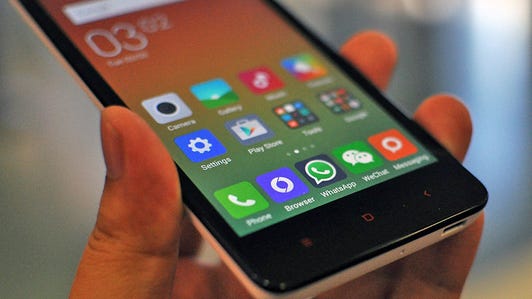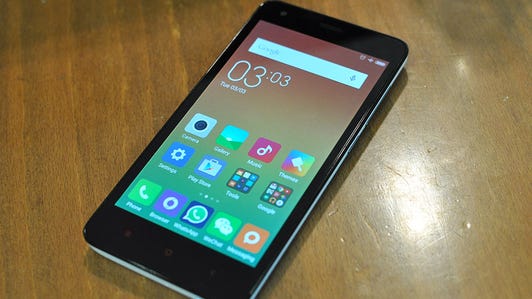
Aloysius Low/CNET
Fans of Chinese smartphone vendor Xiaomi are nothing if not devoted.
It didn’t take long for Xiaomi to fill a 1,000-person theater in Sao Paolo for its Brazilian market launch event. Enough people showed up that Xiaomi held another session, essentially launching the brand in the country a second time for the hundreds of people stuck outside of the theater during the first session. All of this interest — and Xiaomi has never sold a product in this country.
“It’s one of the craziest days of my life,” Hugo Barra, head of Xiaomi’s international business, said in an interview.
That rabid interest from consumers — people who have grown savvy thanks to the speedy transmission of buzz from social media — goes a long way toward explaining why Xiaomi is the world’s most valuable startup, and one of the world’s largest smartphone vendors despite having been founded just five years ago. Its endgame, according to Barra: to be the No. 1 brand in the smartphone business.
Related stories
- How Xiaomi is able to sell its smartphones at a cutthroat rate
- Xiaomi’s plan to be No. 1 in India begins with the Mi 4i
- Xiaomi sells over 2 million phones in 12-hour online sale
The launch in Brazil represents a significant step in that direction, marking the first time Xiaomi will sell a smartphone outside of Asia. The company, already the top smartphone vendor in China , has ambitions to go global. Supporting this mission are a legion of savvy customers who gravitate toward its quality products, sold at prices so cutthroat that Xiaomi admits it doesn’t make much money off them. It’s used that goodwill to generate excitement whenever it launches in a new country.
“It speaks to the value proposition and business model of Xiaomi,” Barra said.
One couple drove 16 hours to get to the event, he said. Lines outside of theater snaked throughout the local Sao Paolo mall, disrupting foot traffic for the bulk of the day, he added.
Xiaomi said Tuesday that it would enter the Brazilian market with the Redmi 2, which will sell online on July 7 (registration for the site opens today). It will retail for 499 Brazilian Real, or $160.40.
Xiaomi’s Redmi 2 is a budget handset that punches above its weight (pictures)






Xiaomi has been nabbing market share from every major player in the smartphone business, including fellow Chinese vendor Huawei, which also has a lineup of quality smartphones at affordable prices. Xiaomi sold 61 million smartphones in 2014.
The competition among Chinese players is rough. Huawei, among the top five smartphone vendors in the world and another major Chinese player, on Tuesday unveiled its latest flagship smartphone, the Honor 7, which will sell for 1,999 yuan, or roughly $323. The company, speaking at its own event in Beijing, said it expects to sell 40 million units in the Honor family of smartphones, or twice as many as a year ago.
Xiaomi, however, doesn’t just sell smartphones. It partners with smaller manufacturers and offers a host of other accessories — often at extremely competitive prices. In addition to the Redmi 2, Xiaomi will sell some accessories in Brazil like the Mi Band fitness tracker and the portable Mi Power Bank, which is a heavy-duty 10,400 mAh external battery.
Where to next?
The company is in no rush to expand in Latin America beyond Brazil, Barra said, noting that there were only 15 people managing operations for Xiaomi in the region. But eventually, he sees the team expanding to other nearby countries.
“We’ll take our time and make sure we do it right,” he said. “We’re not really in a rush.”


Asa Mathat for Recode
Xiaomi will likely stick to more emerging markets like Brazil, where consumers are price-sensitive and where the kinds of deals the company offers really resonate. Back in Asia, Barra talked about getting into Vietnam and Thailand, but gave no details.
Xiaomi has also dipped its toes into Western markets. It opened up its online shop in the US in May, although only to sell accessories such as headphones, a fitness tracker and a pair of battery packs.
The accessories have enticed buyers, with some of the products selling out, Barra said, adding that he was pleased with the critical reviews. “We’ve managed to make some huge wins in markets where the evaluation criteria is much higher,” he said.
As for launching a smartphone in the US, Barra said that the process is complicated by longer evaluation periods for smartphones, the different spectrum bands used in the country (which requires a redesign of products), the size of the country and the need to set up a significant customer-support infrastructure ahead of the launch.
“Entering the US, it’s an astronomically monstrous challenge,” he said.



